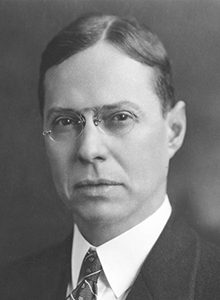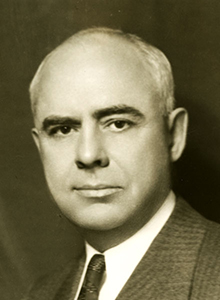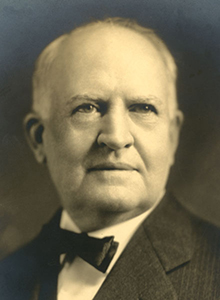
William McChesney Martin Sr.
- President, Federal Reserve Bank of St. Louis, 1929–1941
- Born: July 2, 1874
- Died: February 28, 1955
William McChesney Martin Sr. became the third president of the Federal Reserve Bank of St. Louis on January 16, 1929, succeeding David C. Biggs. He retired February 28, 1941.
Martin was born in 1874. He graduated from Washington and Lee University in Lexington, Virginia. In 1895, he accompanied his uncle, William Samuel McChesney, to St. Louis and served as his secretary at the Louisville and Nashville Railroad. Martin left the railroad industry and attended the Washington University School of Law at night, graduating in 1900. At the time of his appointment to the St. Louis Fed, he was serving as associate trust officer of the Mississippi Valley Trust Company. He worked there from 1900 to 1914 as a lawyer who provided research and speechwriting assistance to Breckenridge Jones, president of the Missouri Bankers Association and founder of the National Association of Trust Companies.
Martin became the first chairman of the board of directors and Federal Reserve agent of the St. Louis Fed on September 1, 1914. Rolla Wells, the Reserve Bank’s first governor (an early term for bank president), had declined the chairmanship of the board and sought Martin for the position. Wells was a member of the fiduciary committee of the trust company for which Martin served as secretary. During World War I, Martin also served as chairman of the St. Louis Fed committee on capital issues. He eventually assumed the role of governor of the Bank in 1929. The title of governor was changed to president, and Martin remained president until 1941.
After Martin retired from the St. Louis Fed, he practiced law at the law firm of Martin, Peper, and Martin and served on the board of trustees for Washington and Lee University.
Martin died in 1955 at the age of eighty.
Written by the Federal Reserve Bank of St. Louis. See disclaimer.







